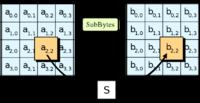
The latest results were announced last week research cryptographic files that showed threats in the method encryption AES-256 data, used in most protected internet transactions and more. AES-256 (Advanced Encryption Standard) is a symmetric block cipher used since 2002 by the American NSA to secure confidential information. Currently, the title method also protects mass storage devices, payment transactions, wireless networks, cellular network connections and a number of other applications.
AES-256 is usually based on a 256-bit encryption key (it is possible to use 128- and 192-bit keys), which can only be cracked by the so-called brute force attack. However, the number of possibilities to check - 2 ^ 256 - is greater than the number of atoms in the universe.
However, scientists say the algorithm is "unreliable" and has "certification flaws". According to them, the data encryption process does not handle certification well when the content of an encrypted message can be read in less time than checking all possible keys. However, like the alleged gaps found in AES-256 translate into online transactions? The media reports that scientists have found a way to break AES that is 3 to 5 times faster than earlier methods. At this point, it is worth mentioning that the recent attacks were part of a program implemented by Microsoft and a Belgian university famous for designing and analyzing cryptographic algorithms.
To be realistic, any attempt to decrypt information protected by AES-256 would take several times longer than the existence of the universe. So reducing this period of time by three or even five times is billions of years anyway, which is in fact an absolutely impractical solution. Even the largest botnet discovered in the world with 30 million computers would not be able to cope with an attack on AES-256 encryption.
So it can be concluded that these findings are interesting, but a lot of time and work is still needed to seriously think about the fact that AES encryption is dangerous. For now, this is it the safest information encryption method.
Source: Link
Cool? Ranking DIY






